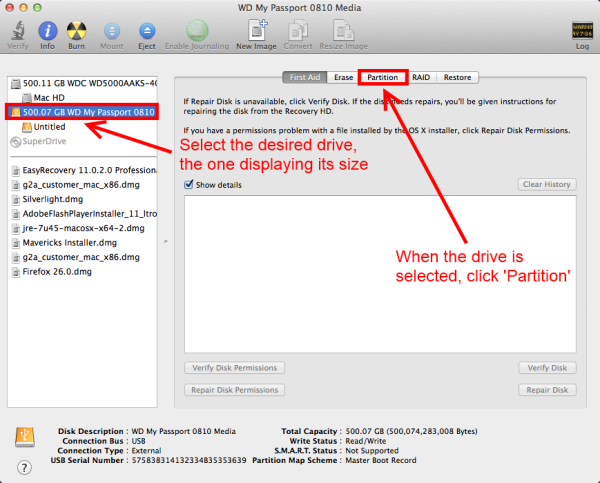Mac Hard Drive Format For Large Files

The best ways to format external drives for Windows & Mac. By Johnson; May 5, 2017. Because FAT32 supports only up to 4 GB large files, it should be used only with flash drives. If you need to format external hard drive Mac or Windows, you may also consider the exFAT files system. How to Format a Hard Drive for Mac.
Then, click on Options. • In the Options window select Master Boot Record and then click Ok. How to download the room for free on mac.
Choose Format from the contextual menu. • A window will pop up where you can choose the format – NTFS, FAT32, or exFAT. Make sure the allocation unit size is set to default and type in a volume label. • Click Start to format the drive.
Click Go on the top tool bar, and select Utilities. Open Disk Utility. Select the external hard drive on the left-hand side. Click the Partition tab. Change the Partition Layout from Current to 1 Partition.
Open and reset your preferences when Pshop starts up.  It will be called something along the lines of 'Adobe Photoshop X Prefs.psp'. Please upload a file larger than 100x100 pixels • We are experiencing some problems, please try again. • You can only upload files of type PNG, JPG, or JPEG. • Tell us some more • Upload in Progress • Upload failed.
It will be called something along the lines of 'Adobe Photoshop X Prefs.psp'. Please upload a file larger than 100x100 pixels • We are experiencing some problems, please try again. • You can only upload files of type PNG, JPG, or JPEG. • Tell us some more • Upload in Progress • Upload failed.
Windows And Mac Hard Drive Format
This is the format that the drive will be formatted to. Program like excel for mac. • Now, click on Apply. • Disk Utility will begin the formatting and repartitioning process. This may take several minutes.
Step 2: If you have already written any data to the drive, back it up before proceeding to the next step. Step 3: Open Windows Explorer, click the “Computer” section in the sidebar and find your drive. Step 4: Right-click on the drive and choose “Format.” Step 5: Under “File System,” choose the file system you want to use. Step 6: Check the “Quick Format” box.
You’ll end up with a drive that is: – Stable, so your data is relatively safe (priority #1) – Capable of handling large files – Readable/writable in Win 7+ – But only readable in Mac OS X 2. Make the NTSF drive both readable and writable in Mac OS X. There are different ways to do that. Method 1: Mac OS X is actually capable of writing to a NTSF drive, just not by default (don’t ask!). So you need to activate it: 1. Go to “utilities” and start the “terminal” app. (enter your password if prompted) 2.